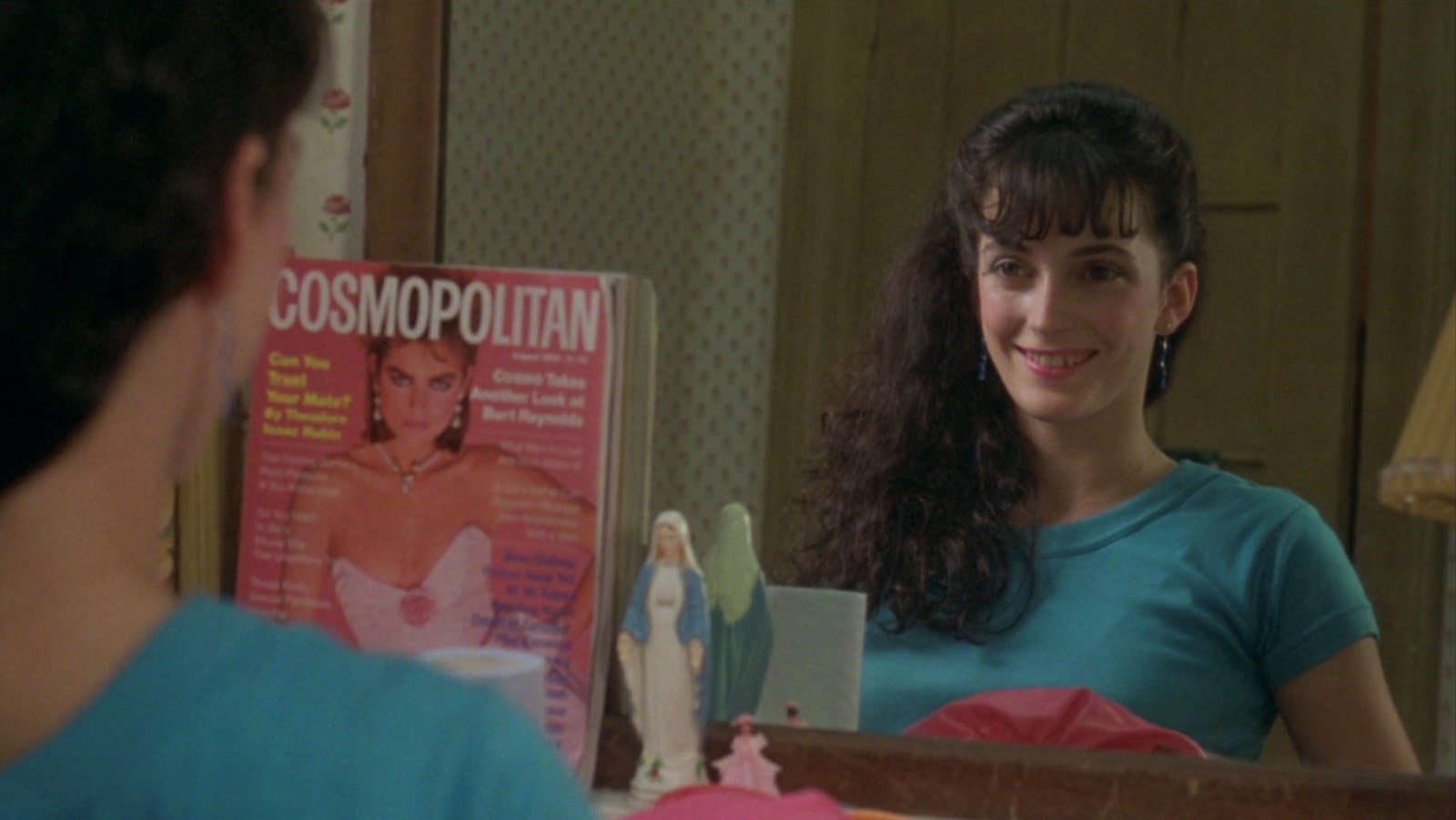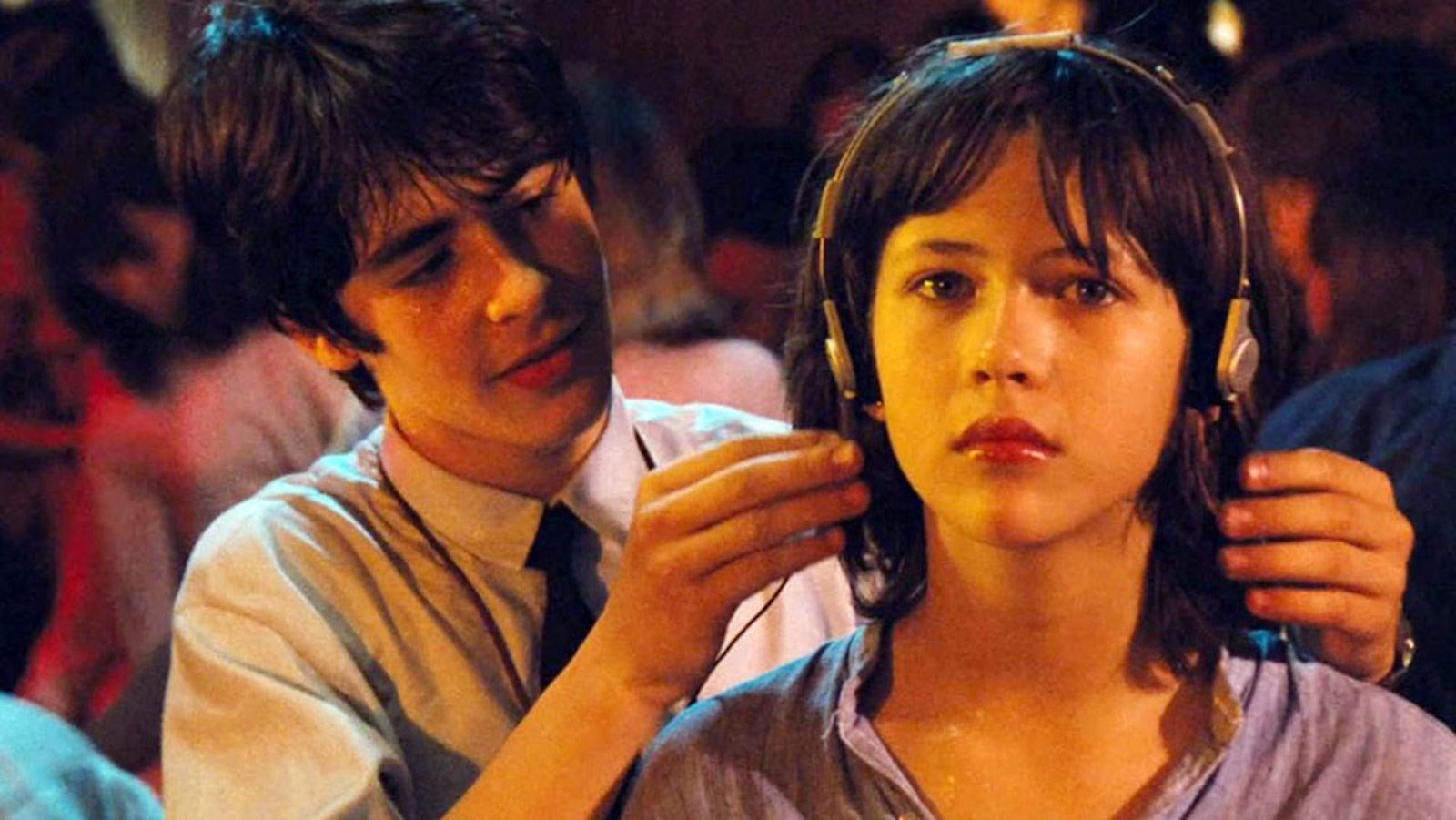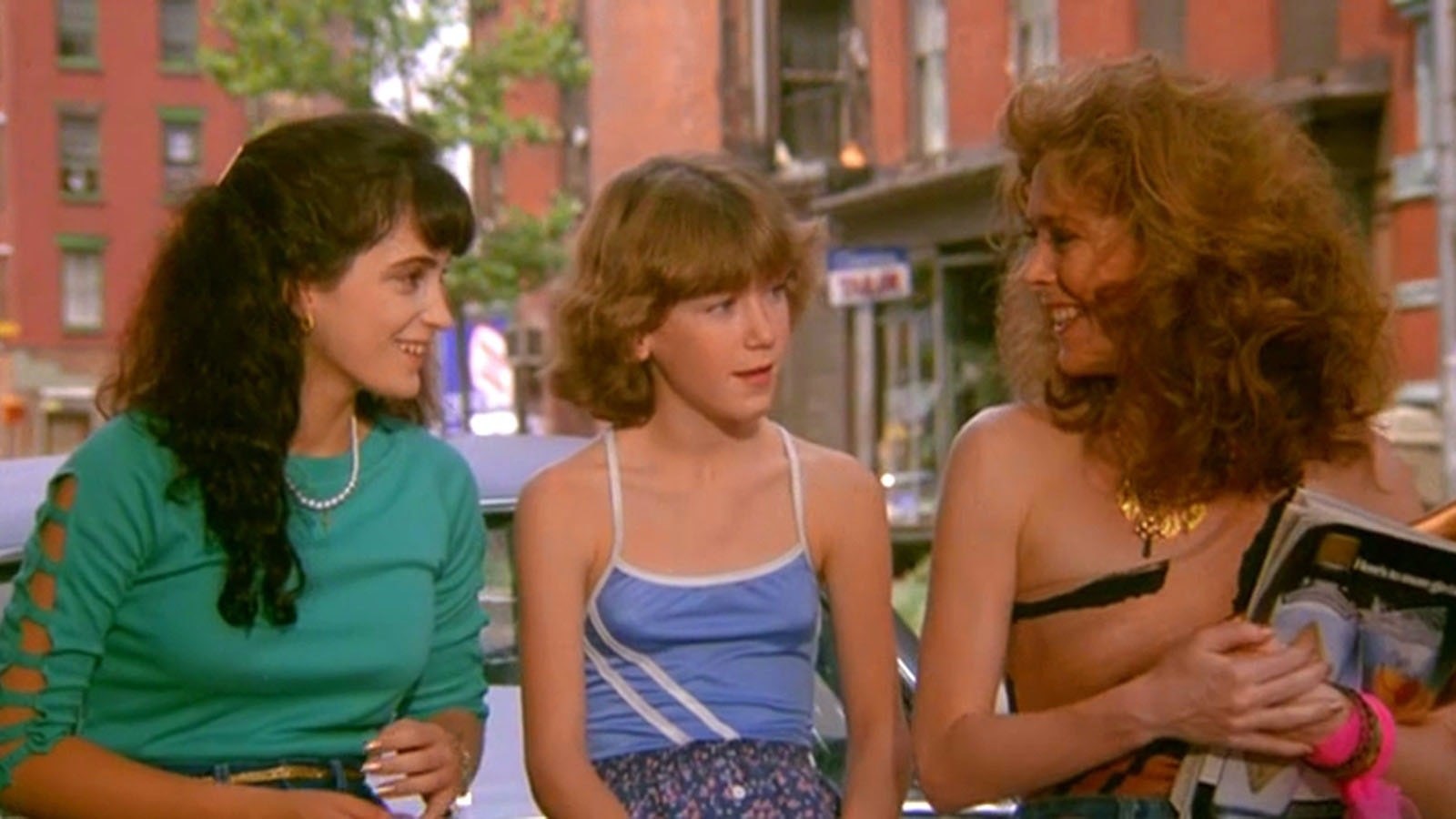Girlhood Studies: How has visual culture shaped ideas of girlhood? In the second season of her AnOthermag.com column, Claire Marie Healy continues to investigate the on-screen girlhoods we may have overlooked.
Lately I’ve been thinking about ideas of comfort; or, at least, I have been seeking it.
I’ve even been watching Gilmore Girls, a show I resisted for many years despite my apparent resemblance to the younger Gilmore, which I’ve always felt to be exaggerated. Now, I’ve reached the worst season of the series – when it officially “goes bad”. And I’m realising the problem might lie in the fact that it’s television. If Gilmore Girls was a feature-length film, the makers could have stopped at exam stress and 24-hour-dance-marathons as major plotlines, rather than venturing into the territory of the upsetting betrayals and estrangements that come later. Ultimately we prefer a show like Gilmore Girls when the dramas remain of a micro-nature, offering a world in which quips are speedily exchanged, the autumn leaves never turn to rotting mulge, and everything is, ultimately, OK.
There’s a kind of pleasure in containment – in the drama of small things – which chroniclers of girls going through adolescence will always have the opportunity to give space to. But in the landscape of teen-girl dramas being made today, content oscillates wildly between inherently traumatic environments and overly sanitised ones. For the latter, you need look no further than the Netflix teen-oriented roster, a moralistic merry-go-round of nostalgic remakes (the Addision Rae-starring He’s All That being far and away the worst), franchise-ready sequels, and now, apparently its very own Christmas “universe”, only marginally less complex than the MCU.
Not that there’s anything wrong with these guilty pleasures. But the problem lies in how far away they feel from real girlhoods while at the same time purporting to be “real” and “relatable.” Have you ever noticed how the schools in these films resemble no actual school in existence? What about the houses, or the girls’ bedrooms? Even in a media-saturated world, the experience of actual girlhood has not started to operate at the pitch of pure entertainment, or progress to the rhythm of an algorithm.

That’s not to say that the alternative “guilty pleasures” I’ve been watching, though operating closer to the frequency of teenage girls’ lives, aren’t also entertaining. Existing far away from Netflix, these are independent films that offer a related kind of comfort, only one which can still feel like it validates our own experiences of girlhood.
Old Enough won first prize at Sundance (then called the US Film Festival) in 1984, but has been largely forgotten compared to the behemoth John Hughes films that the decade is better known for establishing. Made by Marisa Silver when she was in her early 20s, the first-time director probably had her successful filmmaker mother, Joan Micklin Silver, to thank for the early boost of expertise (Old Enough was definitely a family affair, being also produced by Marisa’s sister). Available to watch on the Criterion Channel now, the film traces a single summer in the life of a rich and sheltered 11-year-old, Lonnie, who befriends a 14-year-old neighbour called Karen. Demonstrating how different classes, religions and immigrant backgrounds are thrown together in an urban city environment, the story is a classic coming-of-age through culture-clash, with the working-class Karen becoming a kind of mentor to Lonnie. In reality, the friends teach each other what they each already know, in order to bolster themselves against the world together.
The makers of Old Enough are not far out of adolescence themselves, and it shows in the closer attention to details which, in flashier productions, are too often missing. The make-up montage is an essential ingredient of most teen films. But when Karen applies her make-up in Old Enough, Silver’s close-up shot transmits the feeling of cheap blue eyeshadow on dry eyelids: a friction that belongs to the girls’ world, not that of the professional make-up artist. In another scene, Lonnie runs away from Karen and ventures into an unfamiliar neighbourhood. I love the detail of her decision-making as the panic slowly registers on her face: she runs into an off-licence to hide, but buys a banana while she is there to make her behaviour seem normal. (Of course, she is acting very abnormally.) It’s clear that Silver – unlike her male director counterparts – not only intuited how these small dramas of girlhood played out, but that being a young woman herself, she could actually remember how that felt.
Elsewhere in the 1980s – when girl-centred teen films became a profitable, mainstream endeavour – there are other cornerstones of what I would call the low-stakes girlhood drama. In France, the teenage heroines of Eric Rohmer’s Comédies et Proverbes cycle of films – spanning six works from 1980 to 1987 – are given more airtime by the director than any other filmmaker of the era. Like Pauline, of Pauline à la Plage, a teenager who spends the last weeks of summer vacationing on the coast with her older, glamourous cousin Marion. As is typical of Rohmer films, the character is given free reign to posit her philosophy on various matters, as well as to listen to the musings of the assembled adults. Such character development derives from Rohmer’s technique, in which he based dialogue on long sessions of conversation over tea with all his actors, including teenage girls. As a recently translated biography of Rohmer describes it, “To a very great degree, he took his inspiration from their expressions, their linguistic tics, their ways of being.” The actual experiences of the girls are what wind their way into the script; and thus, these are films that give space to the minutiae of girls’ lives. Within the first few moments of Pauline à la Plage, Pauline describes a boy she once saw and liked, the previous summer, “in Italy, at the next table in a restaurant”; it always reminds me so much of an early encounter of my own, on holiday with my own parents, as a pre-teen. The sort of non-moment that stays with you for some reason.

A particularly silly – sometimes bordering on the deranged – companion piece to Pauline à la Plage might be La Boum (1980). Directed by Claude Pinoteau, and starring a 13-year old Sophie Marceau in her debut role, it’s a film I hesitate to recommend for the reason that the theme song has been in my head for two months; it’s also a film I wholly recommend, however, for the frothy pleasure of watching French teenagers go to their first parties and experience their first loves. The so-called heartthrobs are spotty and have braces; the dramatic twists centre in realistic teen locales of McDonalds, the cinema, and the school playground; and the heroine plasters her crush’s face in surreptitiously-taken, life-size portraits all over her room. There’s even a frankly iconic scene of teenage betrayal in a roller disco, entered via a slide. As Christina Capiocco wrote for Screen Slate, La Boum both “captures the tendency of teenagers to attribute disproportionate gravitas to their fleeting feelings”, and “suggests that there’s a part of every adult that never quite outgrows this fidelity to the moment.”
Also a contender for most irritating theme song is Puberty Blues (1981), based on a 1979 book by Australian writers Kathy Lette and Gabrielle Carey (the original paperback design calls it “A Surfie Saga”). Set in a middle-class suburb of Sydney, the film tracks two teenage best friends over the course of one summer, as they ingratiate themselves with a cool gang of surfer guys and their female hangers-on. Though Bruce Beresford’s film is much less dark than the source material – I like to imagine what Gillian Armstrong, originally slated to direct, might have done with it – it still feels somewhat real. The scenes which work best focus on the girls alone: the way they write answers to exams on the top of their legs under their school skirt, or the way they down straight, and probably out-of-date, tequila stolen from their parents’ cupboards. It’s a story about the biggest decision any teenage girl has to make: whether to stay true to herself, or become a mean girl. It deftly captures how for many young women, girlhood, for a time, means placing all your fantasies onto the bodies and minds of teenage boys. And how the boys, frankly, don’t cut the mustard.
It’s not that stressful or traumatic events don’t take place in these nostalgia-infused worlds: this is not, emphatically, the space of fantasy. In the above works, there are various overdoses, family fall-outs, romantic betrayals, and death. But they are extraneous – they don’t take place due to the fact of experiencing girlhood. The girls, left to their own devices, are having fun.

The above works are also, by and large, white. For Black, Asian and Indigenous girls in the city, already underrepresented on screen, the girlhoods they tend to experience there rarely seem to be so easy, or so light. Watching Spike Lee’s autobiographical Crooklyn (1994), I was struck by the care with which he crafts a story through the perspective of a ten-year-old girl – the heroine, Troy. The only daughter of a large family of boys, she might not go through adolescence in this film, but certainly a kind of coming-of-age. In terms of the environment Troy and her friends move through, we are in a world that feels comforting, but not overly-idealised. In her close analysis of the racial and gender politics of Crooklyn, bell hooks considers the film’s early scenes, in which children and teenagers run around, act out, and go through the day-to-day dramas of life in their Bedford-Stuyvesant neighbourhood. “This is the world of cultural hybridity and border crossing extolled by progressive contemporary critics,” she considers. “And much of the film depicts that world ‘as is’, not framed by the will to present images that are artificially positive or unduly negative.”
It’s a sentiment that speaks to the issue with the Netflix version of life “as is”, or rather, as it never is; a cultural hybridity that, while it is positive, does so often feel artificial. This especially applies to the teen-film output, and all the attendant marketing of them, that are the bread and butter of the media’s production. It’s only by seeking out more independently-minded visions of average girls’ lives that we can get taken back to our own experiences: to a time when small dramas were everything, and the concerns of life didn’t go much further than the end of the street.
Later in her career, Old Enough’s Marisa Silver would switch from movie-making to crafting short stories, citing as her reason that her interests were better served by the written word – that is, her interest in “human behaviour, the nuance of character, the life that exists in shadows and moment.” It’s true that it can sometimes feel like the teen-film genre doesn’t grant adequate space for those concerns. But Silver maybe does a disservice to what she did with her own directorial debut. And if you know where to look, there are those films that allow the viewer to relax into a world where girlhood isn’t inherently a perfect, or indeed a traumatic, period. Extreme events happen to girls, it’s true. But girls also have real adventures, and just because they are real doesn’t mean they have to come to violence. Instead, there are the kind where that small, claustrophobic world expands just a little – letting in new, necessary light.
